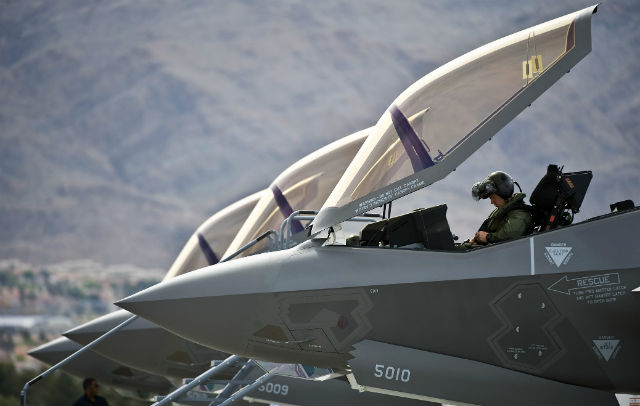Lockheed Martin continues to express confidence in the strength of orders for its F-35 Joint Strike Fighter, despite a recent Department of Defense report which said possible budget cuts could shave billions of dollars from its funding for the programme.
During the company’s first quarter 2014 earnings call on 22 April, Lockheed chief executive Marillyn Hewson said orders for the F-35 continue to increase, with year-over-year quantities projected to climb by 20% in 2014 and 30% in 2015.
More orders are “indicative of increasing aircraft maturity and growing customer demand”, she told investors. Hewson notes, however, that budget pressures have resulted in a “near-term reduction” in orders, and aircraft deferrals.

US Air Force
The military’s fiscal year 2015 budget proposal, which requires Congressional approval, would slow procurement of F-35s by 24 aircraft through FY2019.
Hewson says expanding international support for the F-35 is “helping mitigate domestic pressure” from the budget, noting South Korea’s formal decision, announced in March, to buy 40 F-35As for its F-X III programme. The country expects to finish negotiating the deal by the third quarter of 2014, according to reports, and deliveries are planned to start in 2018.
Hewson says Lockheed looks forward to adding a “multi-billion dollar” order to its backlog with the South Korean deal.
Also, news broke on 22 April that Australia was to announce its approval of a purchase of 58 more F-35As to replace its Boeing F/A-18A/B Hornets. Those aircraft will supplement an earlier order for 12 F-35As.
Lockheed says additional orders could also come from Canada, Israel and Singapore.
Despite Lockheed’s optimism, the DoD warned in a 15 April report that budget cuts known as sequestration could lead the US government to reduce funding to aircraft and aerial munitions companies by $14.2 billion over five years.
Sequestration is required by law, but Congress can repeal the cuts.
If left untouched, sequestration would reduce F-35 procurement by 17 aircraft, including 15 F-35As and two carrier variant F-35Cs over the five-year period, says the report. Those cuts represent $1.72 billion in funding over the period – roughly 3.7% of the F-35’s $45.4 billion budget over the period.
Source: FlightGlobal.com























